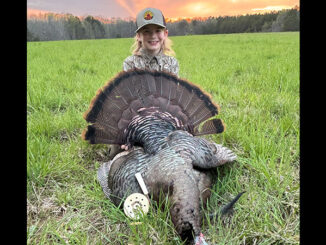
SCDNR says sampling shows recent downward trend, but no panic necessary
South Carolina has become a great place to catch both the juvenile and adult varieties of the red drum. People come from miles around to hook one in Palmetto State waters, but the once abundant species may be showing signs of atrophy, and that is making waves across the fisheries community.
Locally known as the spot-tailed bass, red drum are considered South Carolina’s most- popular gamefish and for good reason. These powerful, non-selective fish are the perfect saltwater opponent that almost anybody can access from either boat or on foot.
For years, the anglers have had little trouble bringing home a limit of reds, and most people who fish these waters hope to land anywhere from one to 25 of these powerhouses in a single day.
But in the Georgetown region, the tide may be shifting. Several seasoned charter captains are worried; they’re reporting far fewer fish on their excursions over the past year. They report that wintering schools in the shallows were significantly smaller than in previous years, with 200-fish schools gone, replaced by 30- to 40-fish schools or missing in some traditional areas.
Last month, several Georgetown guides contacted John Archambault and Dr. Stephen A. Arnott of the S.C. Department of Natural Resources’ Inshore Fisheries Section to see if any of their current data might be mimicking what they are experiencing.
Archambault said that recent surveys indicate that red drum populations are slightly off long-term levels but not necessarily a sign of trouble.
“Seven of the last eight years (statewide) are below the long-term average, but there is a great deal of year-to-year variation in these fish,” Archambault said, “and the next couple of years may be stronger, like they were in 2004, that would make the entire series look better and more like the long-term average.”
According to Arnott, trammel-net surveys show cycling of red drum numbers in shallow estuarine areas and doesn’t provide any evidence of an overall stock decline. Due to the location of sets, the nets typically only capture the younger age-classes of red drum.
“Most of the stock consists of older fish, up to 30 or 40 years old, living in deeper areas,” Arnott said. “The trammel-net trends are driven, to a large extent, by strong and weak years of juvenile recruitment, which vary naturally from year to year.”
Arnott said that, with catch-and-release fishing becoming more popular, fishermen can help the population by being more careful in handling reds they plan to release, as release mortality can have a measurable effect on juvenile redfish.
“Unfortunately, some of those released fish also die due to hooking injuries,” Arnott said.
An SCDNR survey said that J-hooks result in gut-hooking and release mortality than circle hooks, with inline circle hooks gut-hooking the lowest percentage of fish.
For Georgetown anglers, the tag return data collected by SCDNR between 2005 and 2013 shows a slightly higher harvest rate and lower release rate in the Winyah Bay area that may contribute to the lower catch rates.





Be the first to comment